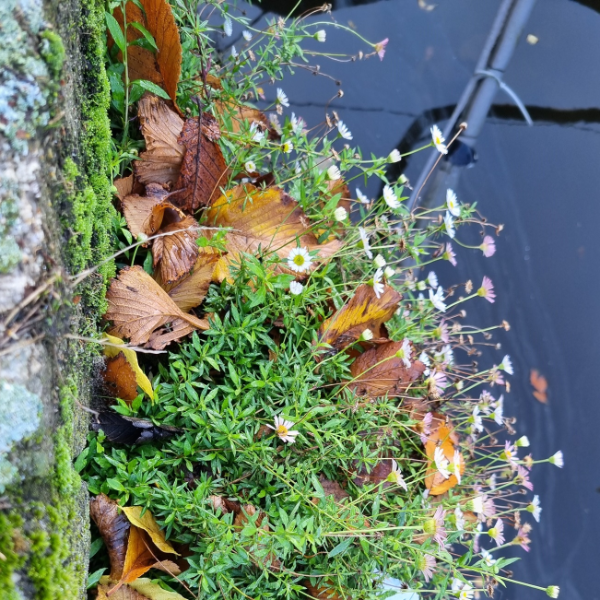Amsterdam’s bridges and quay walls: nurseries for fish

Amsterdam’s bridges and quay walls: nurseries for fish
The City of Amsterdam commissioned Witteveen+Bos, Antea and Arcadis to carry out the partially circular renovation of many of the old historic bridges and quay walls in Amsterdam. The partners and experts from the municipality devised appealing, nature-inclusive measures to increase biodiversity in the city and make our capital greener, including nurseries for fish, space for plants next to the quay walls and reusing capstones.
For the past three years, Witteveen+Bos has worked on various projects as part of the City of Amsterdam’s ‘Programma Bruggen en Kademuren’ (‘Bridges and Quay Walls Engineering Services Programme’) collaboration agreement. The municipality is committed to nature-inclusive construction, and has formalised this ambition in policy and legislation.
A specific part of this is the ‘Handboek Natuurinclusieve Bruggen & Kademuren’ (‘Nature-inclusive Bridges and Quay Walls Handbook’), prepared by the engineering firm of the City of Amsterdam in collaboration with the competent authorities (permit issuing authorities) and custodians. The handbook establishes a framework for various specific measures to promote biodiversity and climate adaptation in both the design and construction phases.
Witteveen+Bos used the handbook in various projects that are part of the programme. For example, the quay wall of the Nieuwe Herengracht canal is being replaced based on our design, which includes various measures related to biodiversity, sustainability and circularity.
Underwater nursery
Fish, macrofauna and other aquatic organisms are important indicators for biodiversity and a thriving water system. The design of the quay wall includes ‘fish stones’ that provide shelter for small and young fish, which is why they are also known as ‘nurseries’.
There are various ways of realising these fish stones. Beneath the quay wall of the Nieuwe Herengracht, they consist of basalt stones of various diameters (60 to 125 mm) contained in gabions of 300 x 1,000 x 1,000 mm (w x l x h).
The gabions do not have any function for the fish; they are used to install the fish stones with a crane in a controlled way. This measure has various objectives, including creating a suitable habitat for the Chabot Bullhead (see image), which once lived in the canals.
Climate adaptation
There is limited space for the nature in the centre of Amsterdam, which is why we are promoting the growth of wall plants on the wing walls of bridges and quay walls by adding two zones to the quay wall design with calcareous mortar mixed to a formula tested in Amsterdam.
The mortar facilitates the (spontaneous) growth of wall flora in the brickwork joints (see image). The design also takes account of the correct moisture levels for wall flora. The porosity of the masonry and the water level play an important role.
The design of the quay wall is partly circular: instead of importing new stone from China or Ireland, existing capstones from the Herengracht are used. The stones are removed, repaired and put back once the new quay wall is completed. The same applies to the stone in the quay wall and the wing walls of bridges, for example.
Impact
With our designs for the ‘Bridge and Quay Walls Programme’, in partnership with the City of Amsterdam, Arcadis and Antea, we are making a specific and effective contribution to increasing biodiversity in Amsterdam and making the city greener. Thanks to an inspiring symbiosis of civil engineering, ecology and reuse, the programme is an engaging example of a specific and responsible expansion of the biodiversity of the inner city that makes our capital greener. A similar approach would be very suitable for other cities with a network of canals.
‘Nature-inclusive Bridges and Quay Walls’ handbook
This handbook puts Amsterdam’s ambitions and policies into practice and is based on the Nature-inclusive Construction Motion, the 2020-2050 Green Vision, the Aesthetic Quality Plan for Quay Walls, the Water Framework Directive, the Nature Conservation Act and the Amsterdam Code of Conduct for Flora and Fauna.
The book includes standards for the nature-inclusive construction of quay walls and bridges that have been agreed with the most important stakeholders, including custodians and competent authorities. This results in relatively short design processes and promotes the early adoption of topics such as biodiversity and sustainability in the design process. This makes the handbook highly suitable for clients about to launch major renovation and/or replacement programmes.
Click here for download (Dutch version only): Handboek natuurinclusieve bruggen en kademuren - openresearch.amsterdam
More information




